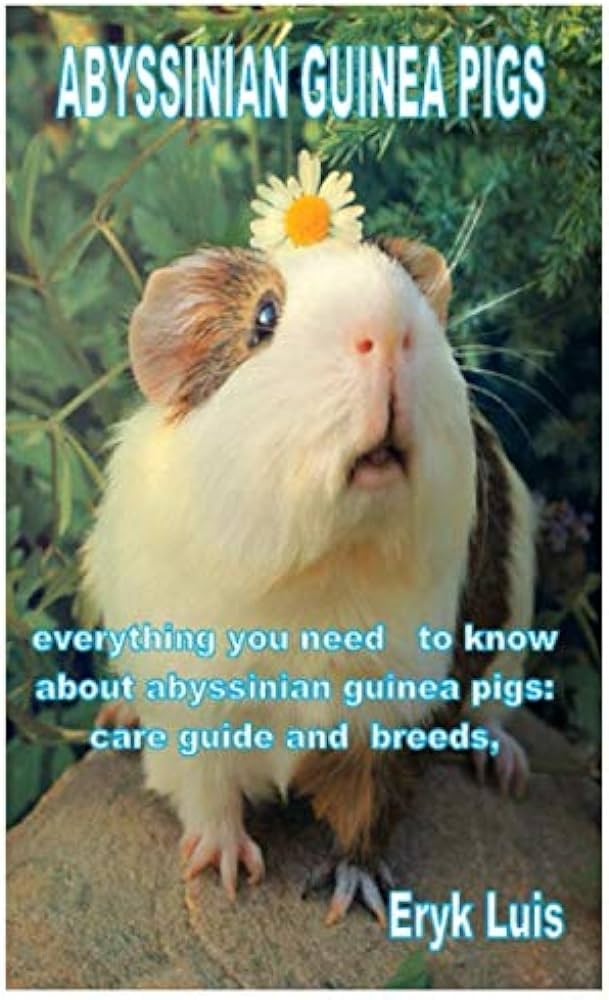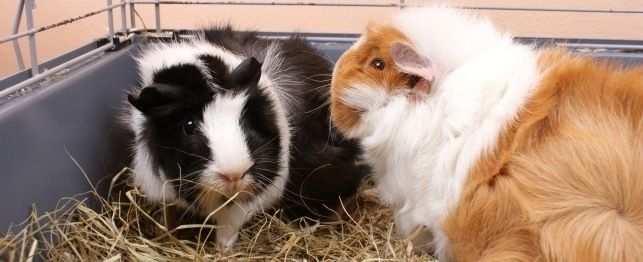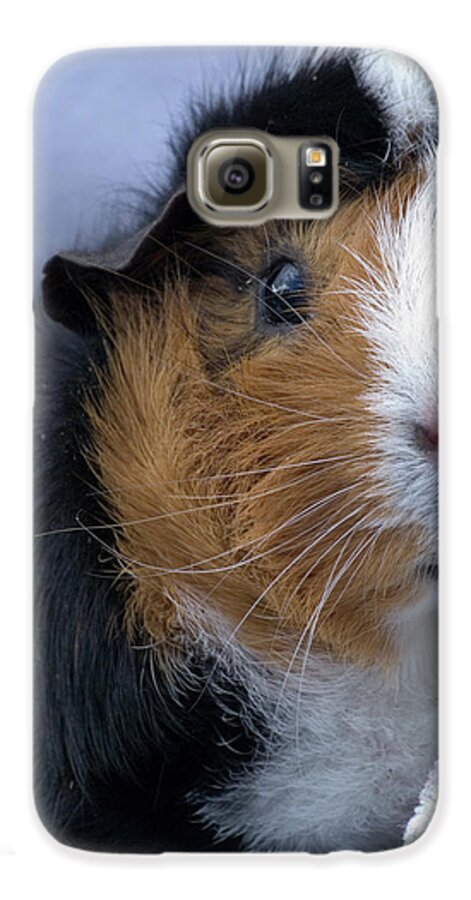Guinea pigs, also known as cavies, are beloved pets across the globe. Their charming squeaks and lively personalities make them delightful companions for people of all ages. Among the various breeds of guinea pigs, the Abyssinian stands out with its unique look and engaging demeanor. In this guide, we will explore the world of the Abyssinian guinea pig, covering their history, characteristics, care needs, and common health issues.
Contents
- 1 The Unique Appearance of the Abyssinian: Rosettes and Coat Patterns
- 2 Personality and Temperament: The Energetic and Curious Abyssinian
- 3 Care and Housing: Essential Needs for a Healthy Abyssinian
- 4 Nutrition and Diet: Feeding Your Abyssinian Guinea Pig
- 5 Grooming Your Abyssinian: Maintaining Their Distinctive Rosettes
- 6 Conclusion
The Unique Appearance of the Abyssinian: Rosettes and Coat Patterns
The first thing that captures your attention when you see an Abyssinian guinea pig is their distinctive rosettes. These whorls of fur radiating outwards from a central point are what set the Abyssinian apart from other breeds. Did you know there are different types of rosettes and coat patterns within the Abyssinian guinea pig breed? Let’s examine them closely.
Types of Rosettes:
- Single rosette: The most common type of rosette in Abyssinians, featuring one central swirl of fur in a symmetrical pattern.
- Double rosette: This type has two central swirls of fur, giving a more complex and unique appearance.
- Serrated rosette: This rosette type has pointed edges, giving it a serrated or “tooth-like” look.
- Satin rosette: Satin Abyssinians have a glossy and shiny coat, making their rosettes stand out even more.
Coat Patterns:
- Brindle: This pattern gives the Abyssinian’s coat a striped appearance, similar to a tiger’s stripes.
- Tortoiseshell: A tortoiseshell Abyssinian has a mix of dark and light patches on their coat, resembling a tortoiseshell cat.
- Ticking: This pattern features individual hairs on the Abyssinian’s coat with bands of different colors, giving a speckled or “ticked” appearance.
The Abyssinian guinea pig comes in a variety of rosettes and coat patterns, making each one unique and special. Whether you prefer a single rosette Abyssinian or one with a brindle coat, there is an Aby for everyone.
Personality and Temperament: The Energetic and Curious Abyssinian
Apart from their distinctive look, Abyssinians are known for their vibrant personalities. They are curious, energetic, and always on the move. Their high energy levels make them a joy to watch as they explore their surroundings and interact with their human companions. Let’s delve deeper into the personality and temperament of the Abyssinian guinea pig.
Energy Level:
Abyssinian guinea pigs are recognized for their high energy levels and love for playtime. Unlike other breeds that may enjoy lounging, the Aby needs regular exercise to stay happy and healthy. This means providing them with ample space to run around and explore, as well as plenty of toys to keep them entertained.
Curiosity:
One of the most endearing traits of the Abyssinian is their curiosity. They are always eager to explore new things and often climb onto your lap or shoulder to get a better view of their surroundings. This makes them great pets for children as they are always up for some playtime and exploration.
Social Nature:
Guinea pigs are social animals and need interaction with other guinea pigs or humans to thrive. The Abyssinian is no exception and enjoys the company of their owners and other guinea pigs. If you plan on getting an Aby, it’s best to have at least two so they can keep each other company.
Care and Housing: Essential Needs for a Healthy Abyssinian

Having discussed the physical and personality traits of the Abyssinian, let’s focus on their care requirements. Proper care and housing are crucial for the overall health and well-being of your pet guinea pig. Here are some essential needs for a healthy Abyssinian.
Cage Size:
The cage size is one of the most important factors to consider when housing your Abyssinian guinea pig. As active creatures, they need sufficient space to run, play, and explore. The minimum recommended cage size for one Abyssinian is 7.5 square feet, but larger is preferable. If you have more than one Aby, add an extra 2-3 square feet per pig.
Bedding:
Bedding is also an essential aspect of an Abyssinian’s cage. It provides a soft and comfortable surface for them to walk and sleep on, as well as helps absorb urine and odors. Good bedding options include paper-based bedding, aspen shavings, or fleece liners.
Exercise and Playtime:
As mentioned earlier, Abyssinians are energetic and require regular exercise. While the cage should be spacious enough for them to run around, it’s also important to provide them with additional playtime outside the cage. This could mean creating a designated play area in your home or letting them explore a safe, enclosed space.
Temperature and Humidity:
Guinea pigs are sensitive to temperature and humidity, and Abyssinians are no exception. They thrive in temperatures between 65-75 degrees Fahrenheit, with humidity levels between 30-70%. It’s essential to monitor the temperature and humidity in your guinea pig’s living area to ensure they are comfortable and healthy.
Nutrition and Diet: Feeding Your Abyssinian Guinea Pig

Just like any other pet, proper nutrition is crucial for the health and well-being of an Abyssinian. A balanced diet will not only keep them physically healthy but also contribute to their overall happiness and energy levels. Here are some essential things to know about feeding your Abyssinian guinea pig.
Hay:
Hay should make up the majority of your Abyssinian’s diet. It provides vital nutrients and fiber that help maintain a healthy digestive system and prevent common dental issues in guinea pigs. Timothy hay is an excellent choice for adult guinea pigs, while alfalfa hay can be given to younger Abyssinians as it contains more calcium and other necessary nutrients for growth.
Pellets:
Abyssinians should also have access to high-quality pellets made specifically for guinea pigs. These pellets are formulated to meet their nutritional needs and should make up about 1/8th cup per day per pig. Avoid giving them too many pellets as they can lead to obesity and other health problems.
Fresh Vegetables:
Fresh vegetables should make up about 10-15% of your Abyssinian’s diet. Some excellent options include leafy greens like romaine lettuce, kale, or cilantro, as well as other veggies like bell peppers, cucumber, and carrots. Remember to introduce new vegetables slowly, and always wash them thoroughly before serving.
Fresh Water:
Clean, fresh water should always be available for your Abyssinian. Make sure to change their water daily and use a water bottle or heavy ceramic bowl that cannot be tipped over.
Grooming Your Abyssinian: Maintaining Their Distinctive Rosettes

One of the joys of owning an Abyssinian guinea pig is grooming them. While they do not require extensive grooming like long-haired breeds, they still need some basic care to keep their coat and rosettes healthy and beautiful. Here are some tips for grooming your Abyssinian.
Brushing:
Abyssinians have short, coarse fur that does not require frequent brushing. However, it’s still essential to brush them at least once a week to remove any loose hair and prevent matting. Use a soft-bristled brush or a grooming glove to gently brush their coat in the direction of hair growth.
Bathing:
Bathing an Abyssinian should be done sparingly and only when necessary. Guinea pigs are naturally clean animals and do not require frequent baths. However, if they get particularly dirty, you can use a gentle shampoo formulated specifically for small animals. After bathing, make sure to dry them thoroughly, especially around their rosettes to prevent any fungal infections.
Nail Trimming:
Regular nail trimming is crucial for guinea pigs as their nails can grow long and sharp, which can lead to injury or discomfort. Invest in a pair of small animal nail clippers and trim their nails every few weeks, taking care not to cut into the quick (the pink part of the nail).
Conclusion
In conclusion, the Abyssinian guinea pig is a unique and captivating breed with its distinctive rosettes, energetic personality, and social nature. As with any pet, proper care and attention are essential for keeping them healthy and happy. We hope this guide has provided you with valuable information about the Abyssinian breed and will help you give your Aby the best life possible. Whether you’re a first-time owner or an experienced guinea pig enthusiast, there is no denying the charm and charisma of the Abyssinian guinea pig.
